Y is for Yeast Experiments
The A to Z Science series for toddlers and preschoolers at Inspiration Laboratories continues with the letter Y. Y is for Yeast Experiments.

Y is for Yeast Experiments
Questions to ask to get our yeast experiment going:
- What makes bread rise?
- Is yeast a living organism? How can we find out?
- What happens when you add yeast to a bowl of warm water and add some sugar?
- Can we measure how much carbon dioxide yeast produce?
- How does the amount of sugar or yeast affect the amount of carbon dioxide produced?
- Does the temperature of the water affect the yeast?
Supplies Needed:
- Active dry yeast (baker’s yeast)
- Sugar
- Warm water
- Bowls
- Spoons
- Plastic bottle
- Balloon
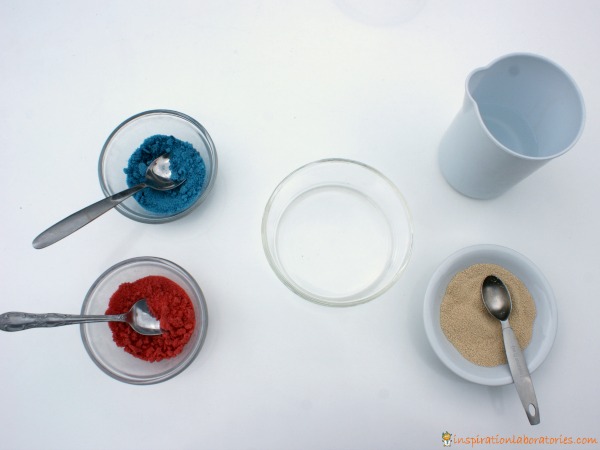
We activated our yeast with warm water (around 110°F). We fed our yeast colored sugar. You can make your own colored sugar (Add food coloring to the sugar, place it in a single layer, and allow it to dry.) or you can use decorator’s sugar (like for cookies and cupcakes).
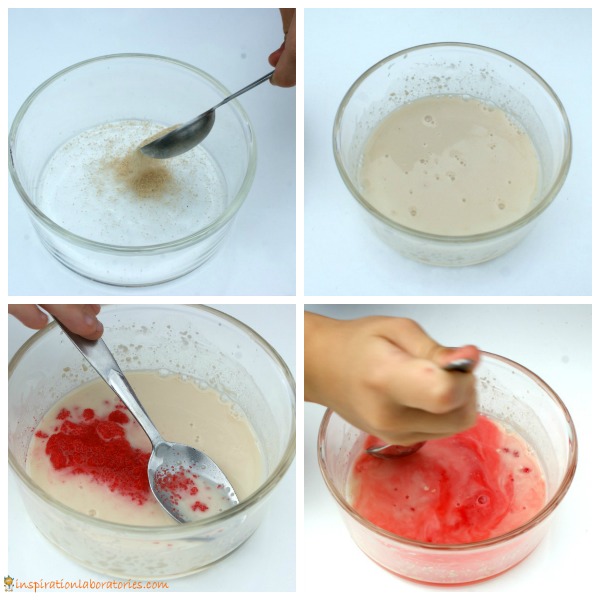
Allow your children to experiment with the amounts of yeast, warm water, and sugar they use. Set up different bowls. To create a good experiment, you should only change one variable at a time. For example, set up 3 bowls. Keep the amount of yeast and warm water used the same in each bowl. Add different amounts of sugar to each of the bowls. Observe what happens in each of the bowls.
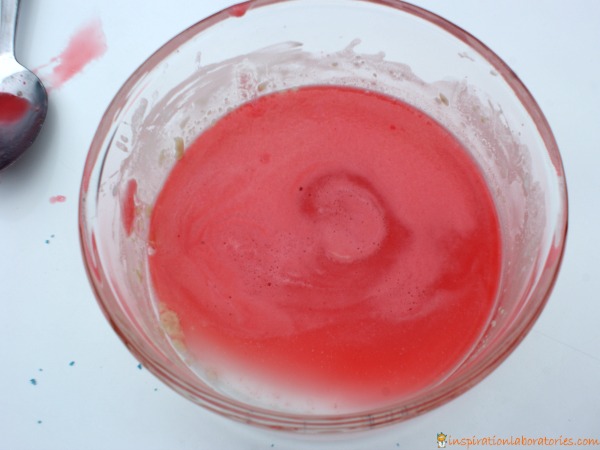
You’ll see a cool foam or bubbles start to form. Talk about what is causing this. It’s the carbon dioxide the yeast are releasing.
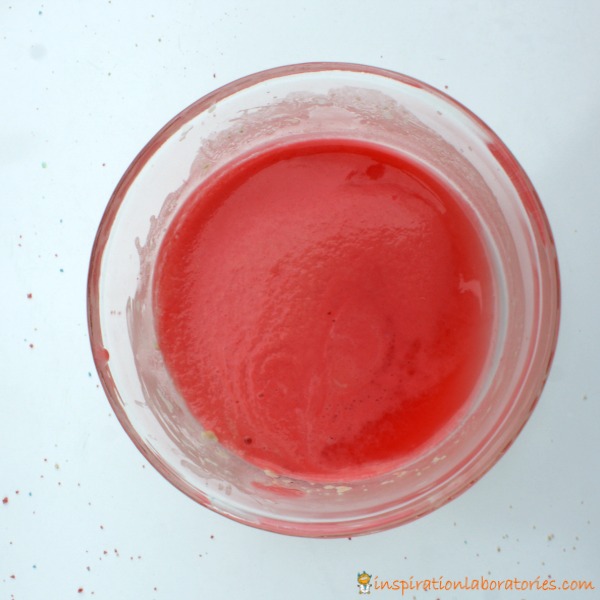
A safety side note: While the bubbles look fun to touch and explore, I would only do this with a spoon. Not only does the yeast produce carbon dioxide but it also makes alcohol. The amounts are fairly small but you still wouldn’t want children to taste or ingest any of it.
Try a new experiment and change a different variable – change the amount of yeast or the temperature of water.
Stir the bubbles and you might see this. They start to break apart.
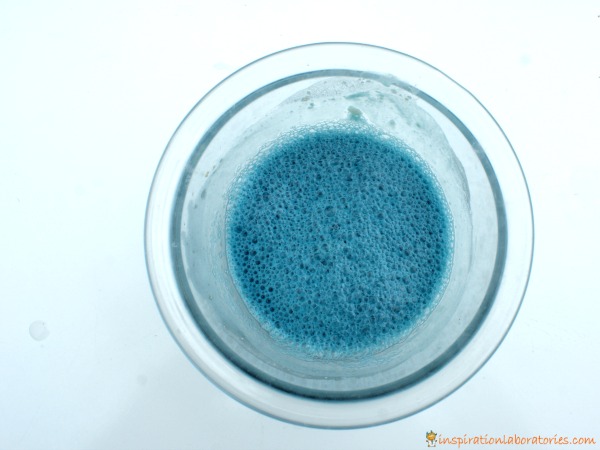
Or you could get a cool layer of foam like this.
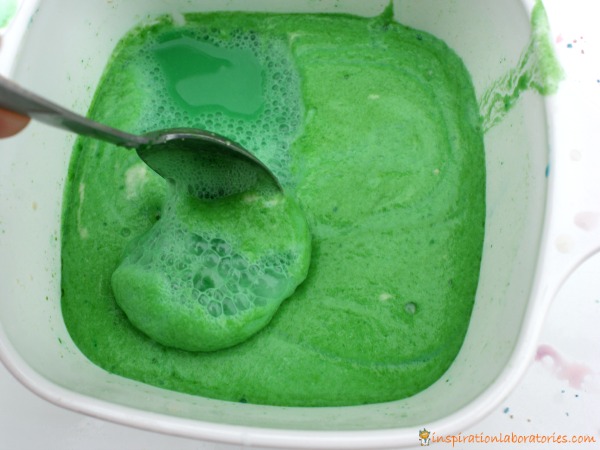
Instead of using a bowl to observe the yeast, you can set up your experiment in a plastic bottle with a balloon. The goal here is to see how much carbon dioxide is being produced by the yeast. The balloon will inflate as the carbon dioxide fills the container.
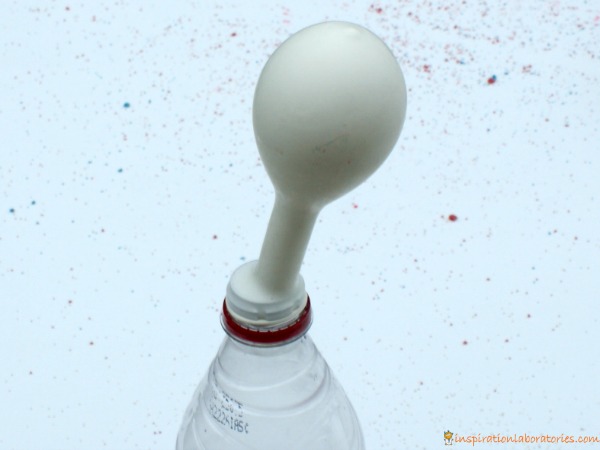
Conducting the yeast experiment in plastic bottles is a good option for younger kids. They won’t be tempted to touch (or eat) the colorful foam and they can see what is happening more easily.
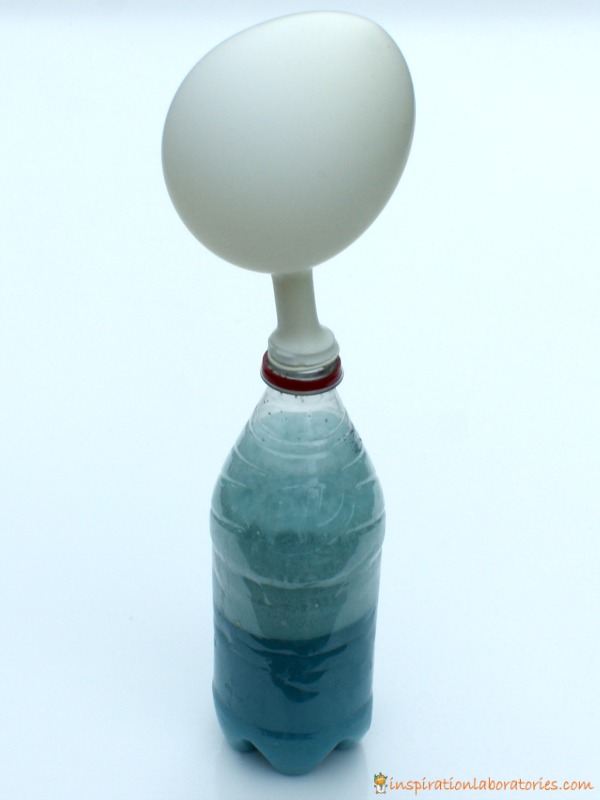
More about Yeast
Yeast is a single-celled fungus. Baker’s yeast is what we used in this experiment. It is what helps make bread rise (it’s a leavening agent). Yeast converts sugar into carbon dioxide and ethanol (anaerobic respiration). The carbon dioxide produced by the yeast is what makes the bread expand and rise. Yeast need sugar to do respiration. However, too much sugar will slow down their growth (and they won’t produce as much carbon dioxide).
More Science Experiments to Try
- 22 Outdoor Science Experiments
- 20 Temperature Experiments
- 20 Preschool Physics Experiments
- See all of our experiments here.
Be sure to subscribe to our weekly newsletter and get exclusive science explorations for young scientists in each issue.
![]()

Leave a Reply